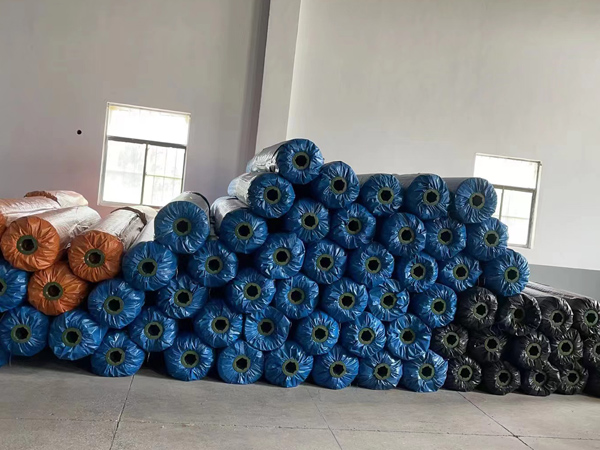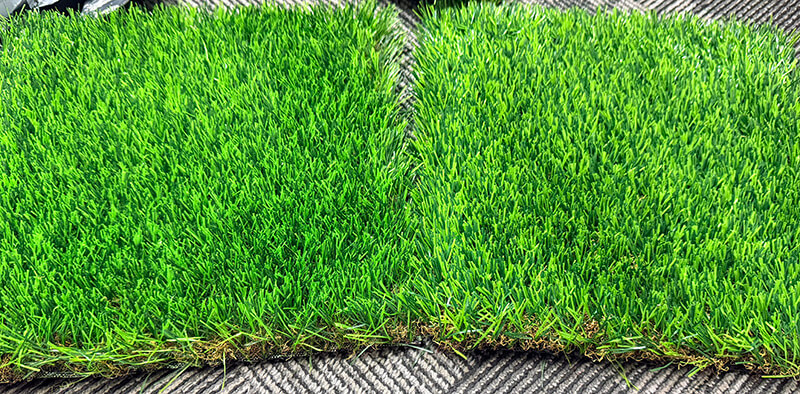
New Synthetic Lawn Grass Inbound Guide: From Receiving to Storage, Building a Standard Warehouse Process
In the supply chain of synthetic lawn grass, warehousing is far more than simple "storage"; it is a critical link in preserving product value and ensuring the final installation outcome. A standardized inbound process for new synthetic lawn grass can effectively prevent unnecessary damage and financial losses, and is a testament to a company's professional management and commitment to quality. Today, we will provide a detailed breakdown of how to handle synthetic lawn grass with care, guiding you through the complete process from receiving to storage.
Why "Close Enough" Isn't Good Enough for New Synthetic Lawn Inbound?
Newly arrived synthetic lawn may seem resilient, but during its potentially long "dormant" storage period, it faces numerous potential threats:
Physical Damage: Improper handling or compression can cause grass fibers to mat, backing to crack, or even deform the rolls, creating irreversible damage.
Color Fading: Prolonged direct sunlight causes UV degradation, leading to fading or discoloration of the fibers, making new synthetic lawn look dull.
Moisture & Mold: Damp environments are breeding grounds for mold on the backing and algae on the fibers, directly impacting product lifespan and hygiene.
Management Chaos: Unclear information recording and disorganized storage lead to poor rotation (e.g., Last-In-First-Out), causing some synthetic lawn to sit for too long, increasing inventory costs and the risk of aging.
Therefore, a meticulous inbound process is the first and most important line of defense in protecting product quality.
Step 1: Meticulous "Receiving Inspection" – Keeping Problems at the Door
Before the driver leaves with a signature, your inspection must be swift yet thorough. This is not just about accepting goods; it's about defining responsibility.
1. Check Documentation: First, verify that the information on the delivery note matches your purchase order: product type, specifications, color, quantity, roll numbers, etc. Proceed only after confirmation.
2. Inspect the Transport Vehicle: Observe if the truck shows signs of rain exposure, contamination, or if the tarpaulin is properly secured. This gives an initial indication of the in-transit conditions.
3. Sampling & Unwrapping: Randomly select 1-2 rolls and partially unwrap them for inspection before full unloading.
3.1. Packaging Check: Look for significant tears, punctures, or water stains on the outer wrapping (usually waterproof woven cloth or plastic film).
3.2. Product Check:
3.2.1. Grass Layer: Check color and density against the approved sample. Look for obvious color variation, stains, or abnormalities.
3.2.2. Backing Layer: Check if the backing is even and smooth, without cracks, mold, or unusual odor.
3.2.3. Roll Shape: Check if the synthetic lawn maintains a neat cylindrical shape, without severe deformation or indentations.
4. Count Quantity: Carefully count the total number of rolls received and cross-reference it with the delivery note. If possible, weigh a sample roll and compare it to the standard weight as another verification method.
5. Document with Photos/Video: If any issues are found (damage, water damage, specification mismatch), immediately take photos and videos, clearly documenting the problem. Have the carrier driver sign acknowledging the issue. Contact the supplier promptly to discuss a resolution.
Core Principle: Identify and document any problems before signing the delivery receipt. Responsibility becomes much harder to assign once the goods are signed for.
Step 2: Clear & Accurate "Information Registration" – Creating an ID for Every Roll
After the physical inspection, managing the information flow is equally crucial. This step turns abstract inventory into visible, manageable data.
1. Apply Unique Labels: Attach a unique barcode or label to each synthetic lawn. The label should include at least:
*Product SKU
*Inbound Date
*Roll/Batch Number
*Length/Weight
*Supplier Information
2. Enter into System: Input the above information, along with the arrival batch number and purchase order number, into your Warehouse Management System (WMS) or digital ledger. Ensure the system data perfectly matches the physical goods.
3. Create Inventory Records: File all related documents for this inbound shipment – delivery notes, inspection records, photos – creating a complete traceability trail.
The Value of Digitization: Using barcode scanners for data entry and subsequent stocktaking significantly improves efficiency and accuracy, reducing human error.
Step 3: Scientific & Rational "Storage Location Selection" – Creating a Safe Haven
What should the ideal "home" for synthetic lawn grass look like? The following elements are critical:
1. Absolute Elevation – Use Pallets!
1.1. Purpose: To isolate the synthetic lawn grass from ground moisture and allow for air circulation underneath.
1.2. Requirement: Always use dry, clean, and mold-free wooden or plastic pallets. Ensure every roll rests securely on a pallet. Direct contact with the floor is strictly forbidden.
2. Environmental Requirements – Cool, Dry, Ventilated
2.1. Indoor Warehouse is Ideal: The warehouse should provide excellent shade, protection from rain, and good ventilation.
2.2. Temperature & Humidity Control: The ideal environment is room temperature (avoiding extremes) with relative humidity below 70%. Dehumidifiers are recommended in humid climates or seasons.
2.3. Away from Hazards: The storage area must be kept away from chemicals, oil, heat sources (e.g., boiler rooms), and sharp objects.
![synthetic lawn grass for sales]()
Step 4: Safe & Standardized "Stacking & Storage" – The Art and Science of Space
How do you maximize space without damaging the product?
1. Store Upright, NEVER Lay Flat!
1.1. Synthetic lawn grass must be stored upright (with the grass pile facing up/down), like tires. Never stack them lying flat. Horizontal stacking subjects the bottom rolls to constant excessive pressure, causing permanent fiber matting and backing deformation, and creates unstable, pyramid-like structures.
2. Limit Stack Height, Prioritize Stability
2.1. When stacking multiple rolls on the same pallet, follow the principle of "larger/heavier at the bottom, smaller/lighter on top."
2.2. Recommended maximum stack height is 3 rolls. Higher stacks increase pressure on the bottom rolls and pose a tipping hazard. For taller stacks, use stretch wrap to secure the entire stack and enhance stability.
3. Maintain Safe Aisles
3.1. Leave sufficient space (typically at least 1 meter) between stacks. This facilitates air circulation and, crucially, allows for easy access for stocktaking, inspection, and retrieval following the FIFO (First-In, First-Out) principle.
Step 5: Ongoing "Inventory Records" & SOP Development
The end of the inbound process marks the beginning of ongoing management.
1. Visual Management: Use visible signage or boards in the warehouse to indicate the products stored in each area, their inbound dates, etc., for a quick overview.
2. Enforce FIFO: Utilize your inventory system or physical layout design to ensure the oldest stock is dispatched first, preventing product degradation from prolonged storage.
3. Develop Standard Operating Procedures (SOPs): Document and standardize all the steps above. Train all relevant warehouse staff to ensure every new synthetic lawn delivery receives the same high-standard treatment.
4. Regular Inspections: Implement a routine inspection schedule to check warehouse temperature/humidity, synthetic lawn grass for any abnormalities, and the condition of fire safety equipment, preventing problems before they start.
For synthetic lawn, the warehouse is its longest "layover" on the journey from the production line to the installation site. A scientific and rigorous inbound process, while seemingly detailed, uses upfront diligence and standardization to prevent significant risks and costs down the line. When you execute every step from "receiving to storage" correctly, you are safeguarding not just the product's physical attributes, but also your company's reputation and commitment to your customers. Remember: Exceptional quality is built on a foundation of attention to every detail.




















